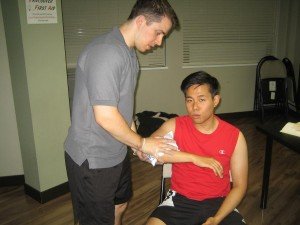Being exposed to the direct rays of the sun can lead to sunburn. The characteristic signs and symptoms include blistering, intensely reddened skin, severe swelling and pain. Even though serious, this type of sunburn can be managed at home if it is small in size and does not occur on the face, feet or hands. A doctor should be consulted right away if the sunburn is severe or the symptoms become worse.
Cooling the skin
The simplest and ideal way to manage sunburn is to cool it off. If this is performed right away, it can stop the burning process as soon as possible in the affected skin. This will also help reduce the pain.
When cooling second degree sunburn, position it under cool running water. You can also encourage the individual to immerse in a tub of cool water and submerge the burn or simply wrap the area using a cold compress. Just remember not to apply ice directly on the burn since this can cause more damage.
Moisturizing the skin

Once the skin is intensely warm but not blistering, it is vital to moisturize the affected skin. You can moisturize the skin using a mild lotion or cream that contains aloe or any hydrating components. Avoid using ointments such as Vaseline since these can only worsen the sunburn.
Caring for the blisters
In case the skin appears inflamed and blistering, you have to bandage it using sterile gauze. Wrap the bandage lightly yet in a secure manner around the sunburn to protect the area as it heals. Take note that the blistered areas are highly prone to infection and keeping it intact and covered is the ideal way to promote healing of the skin.
Pain medications
When it comes to second degree sunburn, an over-the-counter pain medication can reduce the pain until it fully heals. In most cases, it is recommended to use an anti-inflammatory medication until the painful symptoms subside.
Some individuals react differently to various medications and it is vital to use only one that works best. Generally, aspirin should only be used by adults while acetaminophen is the safest choice for children and adolescents. A doctor should be consulted if uncertain on the right pain medication to use.
